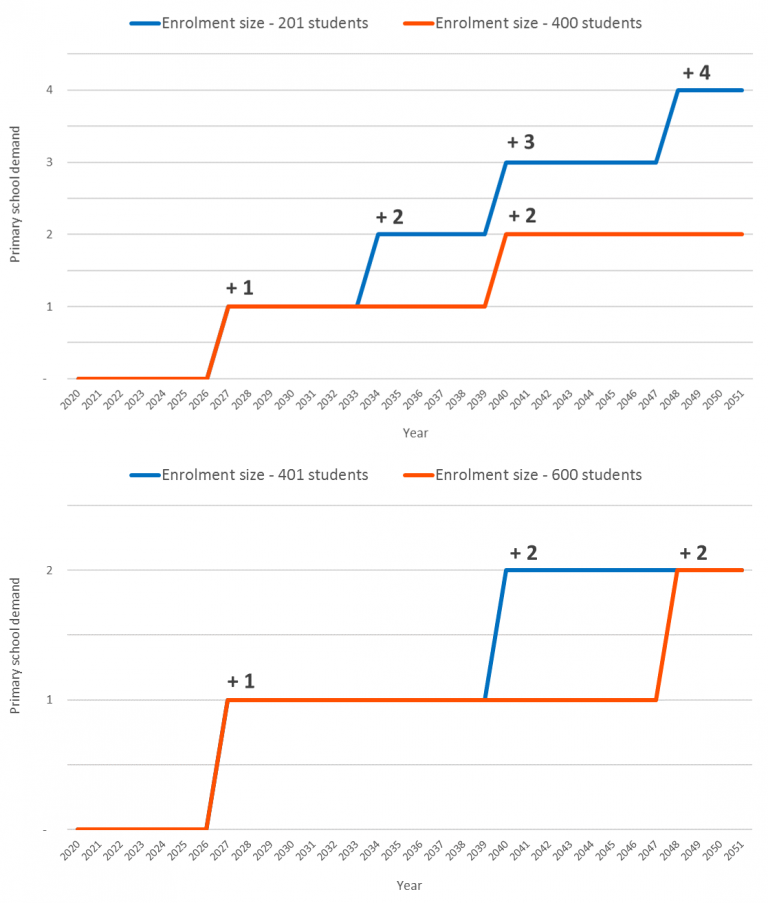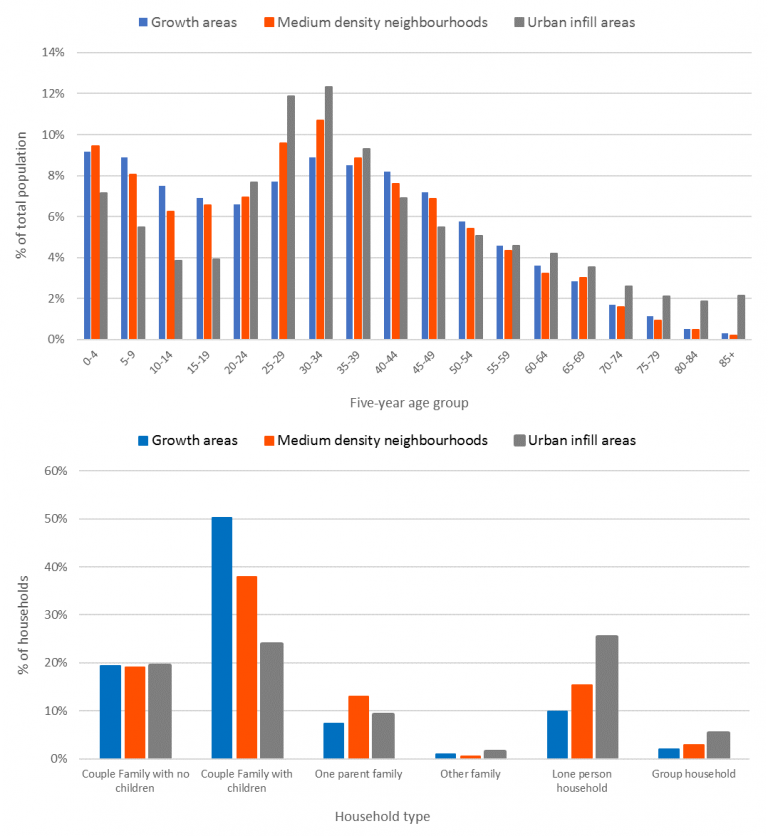Understanding your future population ensures appropriate resource allocation. One recent example we can share with you is of a local government area (LGA) needing to understand how their population will change and grow in the future and what this means in terms of expected primary school demand.
By knowing how many primary school-aged children will live in an area in the next few decades, the council, and other relevant authorities, can plan for the necessary number of primary schools and how much land should be allocated for primary school use.
Case Study
Murray Shire, in Western Australia, engaged .id to conduct a primary school demand analysis for a new growth area, expected to develop over the next few decades. The Shire wanted to know two things about future primary school demand:
- How many primary schools would be needed in the growth area based on recently revised forecasts and
- How many schools would be needed if the housing stock in the growth area developed differently than forecasted (scenario analysis)
The results would also be used to provide an evidence base and challenge the Department of Planning, Lands and Heritage and the Western Australian Planning Commission requirement that the Department of Education and the main non-government education providers allocate land for one school in a growth area for every 1,500 housing units (dwellings) assumed.
The “Draft Operational Policy – Planning for School Sites” guideline document states that “there is a strong correlation between the number of residential lots created by subdivision and the need for new school sites” and while the number of dwellings certainly does correlate with demand for almost any service including school sites, simply using dwellings in the primary school demand assessment does not take into account demographic characteristics such as the age structure of the population expected to live in the area nor how the age structure is likely to change in the future. A population housed in 1,500 dwellings in an urban infill setting will have different demands for primary schools than 1,500 dwellings occupied in a greenfield development area.
Forecasting primary school demand
The first part of our analysis calculated the number of school-aged children expected to live in the growth area over time to 2051. By doing this, we understood how many schools would be needed in the area as it developed and therefore – how much land should be allocated for primary schools. We were also able to calculate when new schools would need to be opened in the area, based on the growth of the school-aged population and assumptions about the likely capacities of new schools.
The 2019 “Schools, Australia” dataset, published by the ABS, provides information about school enrolment characteristics by State. In Western Australia, for example, 38% of government primary schools had an enrolment size between 201 and 400 students. As a significant proportion of government schools are in this range, it was used to calculate demand along with calculations using the next highest enrolment range (401-600 students). Finally, we also surveyed the wider area to understand which other schools were an option for residents in the growth area and accounted for this capacity in the analysis.
Results of our analysis are presented in the chart below. If an enrolment size of 201-400 students is assumed, the growth area will need between 2 and 4 primary schools by 2051, with the first one required soon after the initial settlement of the area and a second required 7-12 years later to meet expected demand, again depending on assumed capacities. If larger enrolment sizes are assumed, the area will only require two schools by 2051.

Demand analysis with scenarios
The second part of the project was a scenario exercise. We assessed what demand for primary schools would be in the growth area if the area developed differently, that is – if different types of housing stock developed and therefore a different type of housing market/population settled in the area. To do this, we drew on years of expertise in demographics and population forecasting, understanding of characteristics of Australian growth areas and the lifecycles of these growth areas. We then ran several scenarios to answer the question “What would demand for primary schools in our growth area look like, if the housing stock developed as stand-alone housing/medium density greenfield housing/denser inner-city type medium density housing?“.
The most likely type of dwelling stock in Murray Shire’s growth area will be greenfield standalone housing (separate houses). Demand in new growth areas is largely driven by first home buyers, namely families with children, who are looking to enter the housing market and purchase a home for their family in an affordable area. However, Murray Shire was also interested in understanding primary school demand if the area developed slightly differently. We assessed 18 examples of greenfield growth areas, medium-density stock in greenfield areas and urban infill areas across Australia.
Results of this analysis showed different demographic characteristics of the three types of housing areas: greenfield growth areas had a higher proportion of families with children, medium-density areas were slightly different and had a higher proportion of couples without children or very young families, whereas urban infill areas were largely lone person households, couples without children or group households. These findings directly affected the primary school demand analysis.

The result of this second analysis was a range of demand outcomes, similar to the first chart in this blog. We could tell Murray Shire how many schools would be needed if the growth area developed in different ways. Unsurprisingly, the housing stock assumed to develop in the area will dictate settlement patterns as well as the role and function of the new area and therefore affect demand for services and infrastructure such as primary education.
By realising how housing stock composition affects the population of the area, the population totals of school-aged children and therefore the demand for primary school infrastructure, Murray Shire is equipped with knowledge of the likely demand scenarios and how primary school demand would change if the housing stock profile and settlement patterns changed during the growth and lifecycle of the growth area.
Helping councils with demand analysis
Demand analysis for age-specific services and infrastructure (such as schools, playgrounds, aged care and community care services, accessible footpaths) is something we can help you with. We have robust input data, intelligence, experience and understanding of demand and how that demand will differ based on location and based on different planning scenarios. We produce valuable insight to help LGAs plan for service provision and resource allocation.
Most importantly – we can help ensure that investment in age-specific services and infrastructure is appropriate, applied to the right communities at the right time and that investment is informed by accurate demographic information and assumptions.
If you have any need for such analysis or would like to learn more about how we can help you improve demand analysis and appropriate investment in services/infrastructure, please contact me on demographics@id.com.au or book a 30-minute meeting via this portal. I look forward to hearing from you!











